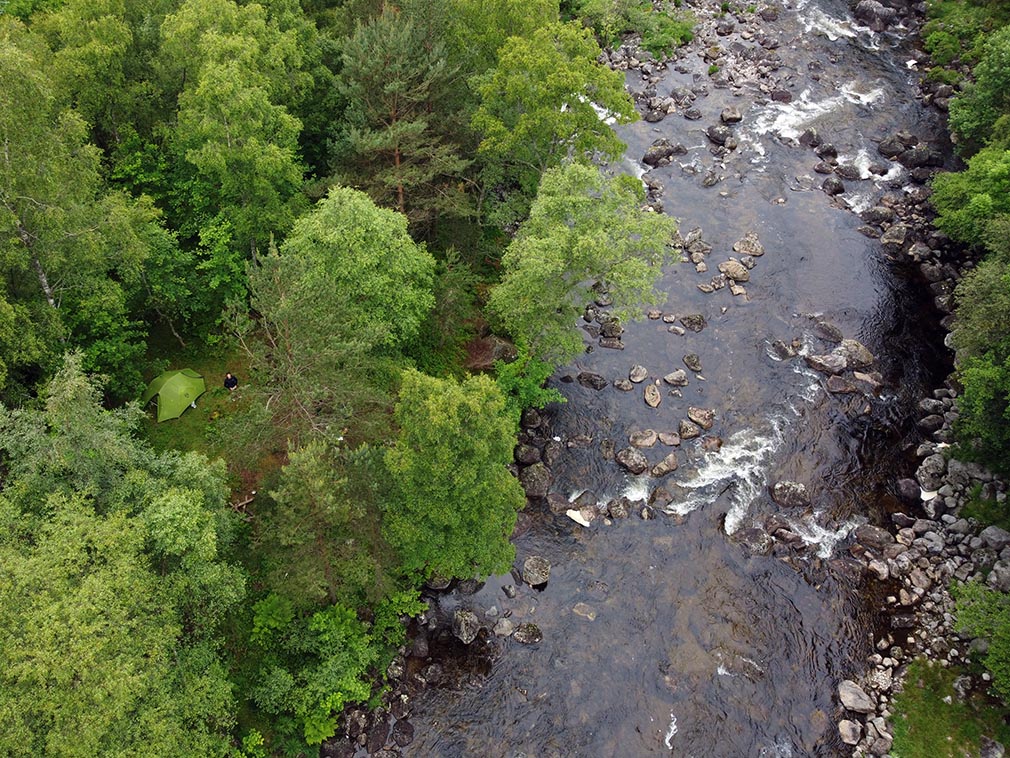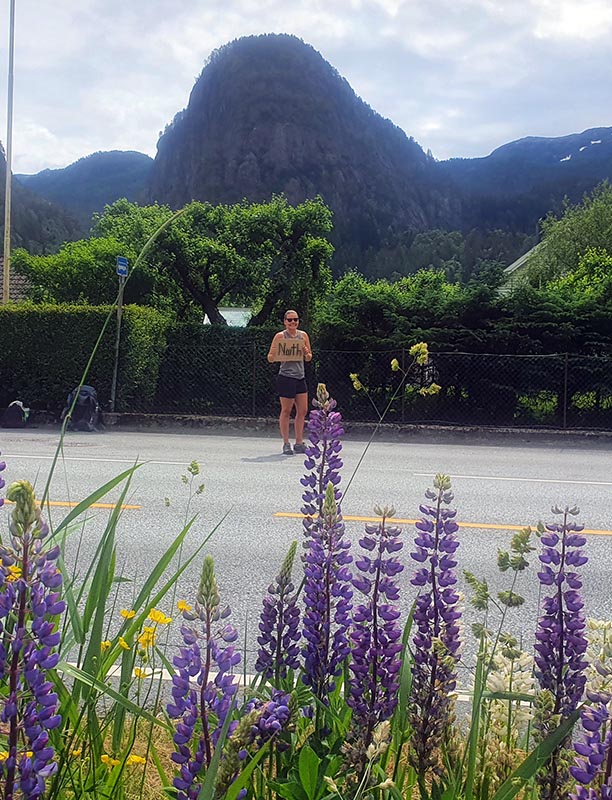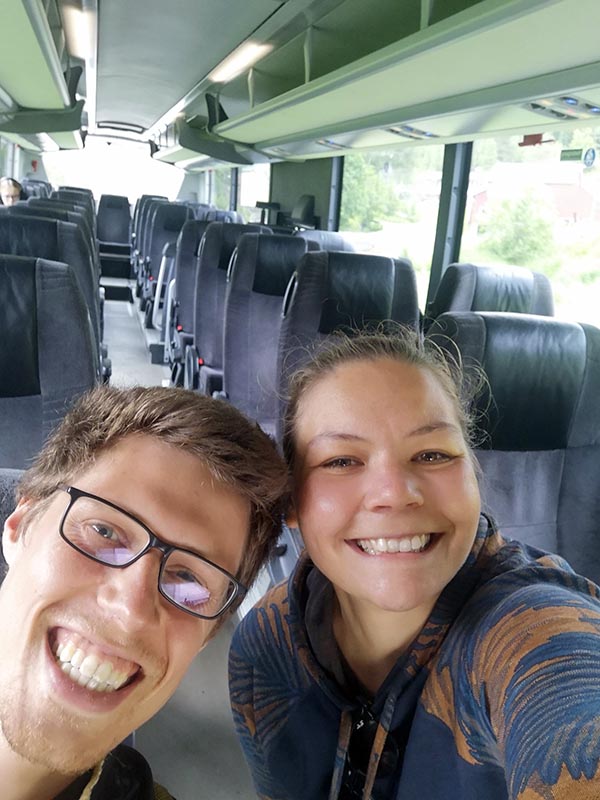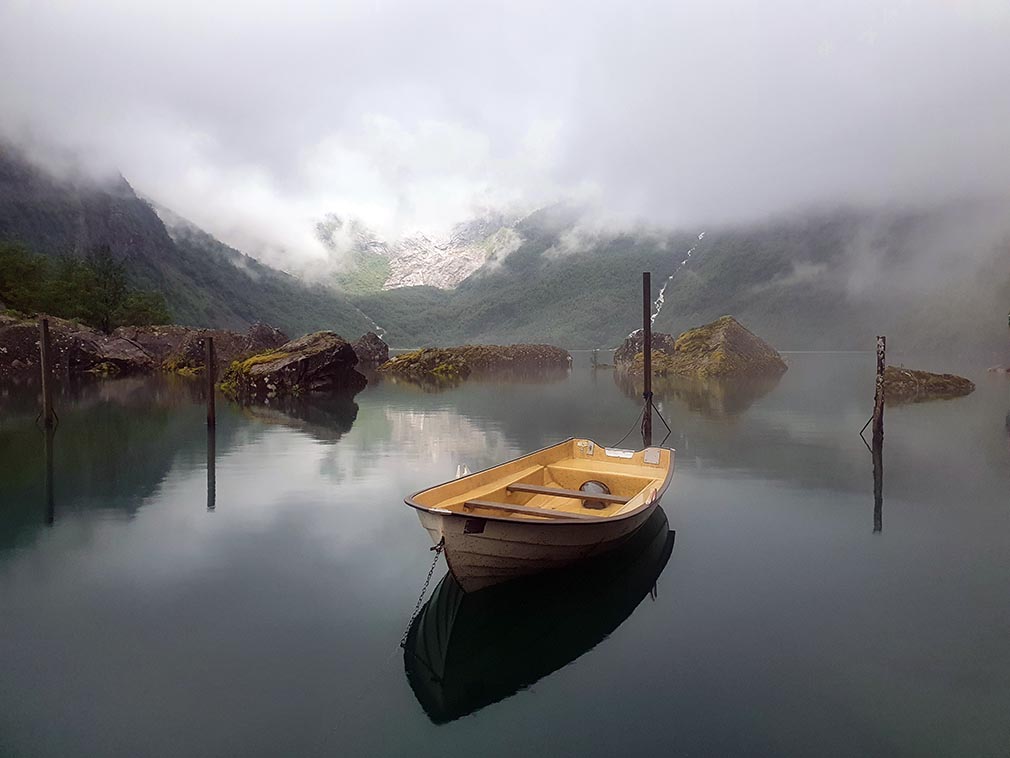Jørpeland - Odda - Bondhus
Provinz Vestland
229 km by hitchhiking
in 9 cars
at 2 days of traveling
Continue up north
After our descent from Preikestolen it is already afternoon. We get dropped off again in Jørpeland. The place by the stream, where we slept a few days ago, is our destination today. Refuel before continuing tomorrow. The route provides that we drive the ferry for the first time in Norway. We are excited!
Again we move to the (probably only) bus stop in Jørpeland. But this time it's the other way! When we're hitchhiking, we like to point to vehicles in the distance and say something like: "The red Volvo, it'll take us 100%." That works sometimes more sometimes less well. But today we are lucky and a German traveler in the campervan stops for us. We drive almost 40km to Årdal, where she drops us off at a gas station somewhere in the middle of nowhere.
But there is practically only this one street and so an old VW T3 soon stops – to my delight even with a Hamburg license plate. The two older women tell us that they have been vacationing together for over 40 years. A respectable friendship! The ride is a bit bumpy and so we are finally happy to be dropped off by the two at the ferry terminal in Hjelmeland We let ourselves be told that the supposedly largest traditional chair in the world is said to be in the small town. Nevertheless, we save ourselves the way to the 4.5 meter high colossus and devote ourselves to the ferry crossing.
Ferry ride in Norway
There is a small house near the jetty, which we head for to buy two tickets for the ferry. But Germans tend to forget that there are countries that are a bit more advanced when it comes to digitization. So there are fresh spring rolls and glass noodles in the hut, but no tickets. When we asked the guide in a high-visibility vest, he explained to us that the ferries are generally free for pedestrians We are pleasantly surprised, because we had expected a few euros for the crossing. Only the number plates of the cars are photographed - the bills come later in the mail. The drive to Nesvik should take less than 15 minutes. We are amazed when the ship starts to move, because there are no engine noises to be heard! At the pier on the other side, we see all the 'magic' - after each crossing, the ferry docks at a charging station the height of a house, which extends its arm precisely. Energy transition you can touch.
Since there is no traffic on this road apart from the cars on the ferry, we use the waiting time for the next ship for a lunch break. Less than 30 minutes later the next load of cars arrives and this time there is something for us too: A young woman with a dog drives her camper into the lay-by. She is alone on the way to the North Cape - wants to experience a real adventure. She says she hesitated for a moment, but pulled herself together and stopped. We look forward to becoming a part of your holiday story. Together we drive to Sandwhere we are dropped off again at a gas station.
As already mentioned in the context of the ferries, the Norwegians are generally somewhat more digital. At gas stations, for example, payment is made almost exclusively by credit card directly at the pump. So the many gas station shops had to come up with something to lure customers in. Most gas stations in Norway sell fast food. From pizza, burgers, hot dogs to chicken wings. Today we happen to arrive at the gas station just before the shop closes. So there is the rare chance to save food from the garbage can. At the end of the day, stores throw away all finished, already heated products. So you only have to ask for goods that could not be sold today. And so Aylin comes a short time later from the gas station with a big bag full of food. The same works just as often in bakeries or fruit and vegetable shops. Not far from the road we find an uncultivated field and can pitch our tent there for the night.
Hitchhiking the bus
It is a good 100km from Sand to Odda. After we have packed our tent in the morning, we go back to the gas station. We are lucky and with only one stop we drive up to 20km from Odda We stand just behind a curve with our sign and wait for the next vehicle. But even after more than half a year of hitchhiking, you will still be surprised - because our journey continues in a public bus. The driver waves us in and we chat for the next half hour until we get off in the center of Odda. Of course for free. Thank you very much.
Although most travel guides don't really recommend the city, Norway's natural beauty has been preserved away from the industrial region around Odda. The city is sandwiched between the Folgefonna Glacier to the west and steep mountainsides to the east. Many tourists head for the nearby Trolltunga hiking route. The hike ends similarly to Preikestolen with a spectacular rocky outcrop that towers 700 meters above the Ringedalsvatnet lake. The trail is estimated to take over 10 hours and is only for experienced hikers. We have no business being here with our big backpacks! Our visit to Odda is unfortunately quite wet. We stand at the tourist information office, planning our next few days while the sky empties above us. Odda's geographic location makes it difficult for us to find a campsite. The valley is steep and densely built. The mood drops a bit in the basement.
We decide to leave Odda the same day and try to get to Bondhus 20 kilometers away. The place on the other side of the Folgefonna glacier was recommended to us by a Norwegian woman on our trip. So I'm standing on the street with a sodden pizza box. For all those who hitchhike: Don't use fresh pizza boxes! The smell hanging from the cardboard box will whet your appetite and put you in a bad mood. 😋
Hike at Bondhusvatnet
But it doesn't help. It must go on - and it goes on! An elderly couple is on their way to their weekend home. After a short luggage tetris everything is stowed away. And less than half an hour later, the two drop us off at the Bondhus car park. Two hiking routes also start here. One goes up to the glacier (~8 hours), one goes to the glacier lake below (~1.5 hours). Let's take that. The size of the parking lot suggests that all hell can break loose here on sunny days. But it's raining cats and dogs and so there are only a handful of cars here. We hope to find a campsite along the way and start walking. Beside us meanders a raging stream with ice-cold water fresh from the glacier. The area is marked as a water protection area, which prohibits bathing, camping and urinating within 50 meters. We walk all the way to Bondhusvatnet glacial lake. Deep fog hangs over the lake as the drops fall onto the water surface. The scene is mystical, probably this lake couldn't be more beautiful even in the sun.
Leider haben wir auf der gesamten Strecke nur zwei dürftige Plätze fürs Zelt finden können. Und wenn ich dürftig schreibe, dann meine ich einen Platz direkt am Weg, offiziell zu nah am Wasser und einen weiteren Platz, der mit erheblicher Schräglage verbunden ist. Unser Energielevel und unsere Laune lässt uns heute zu Kleinkriminellen werden und wir legen die Wasserschutzverordnung etwas freizügig aus. Es wird der flache Platz zu nah am Wasser ausgewählt. Wir achten natürlich penibel darauf die Ressource Wasser nicht zu verschmutzen. Aber wir sind froh nach einem langen Tag endlich in unser Zelt kriechen zu können. Ursprünglich haben wir geplant mehrere Nächte bei Bondhus zu bleiben, aber ohne vernünftigen Zeltplatz mit schlechtem Wetter, werden wir morgen unseren Weg Richtung Bergen tomorrow.






